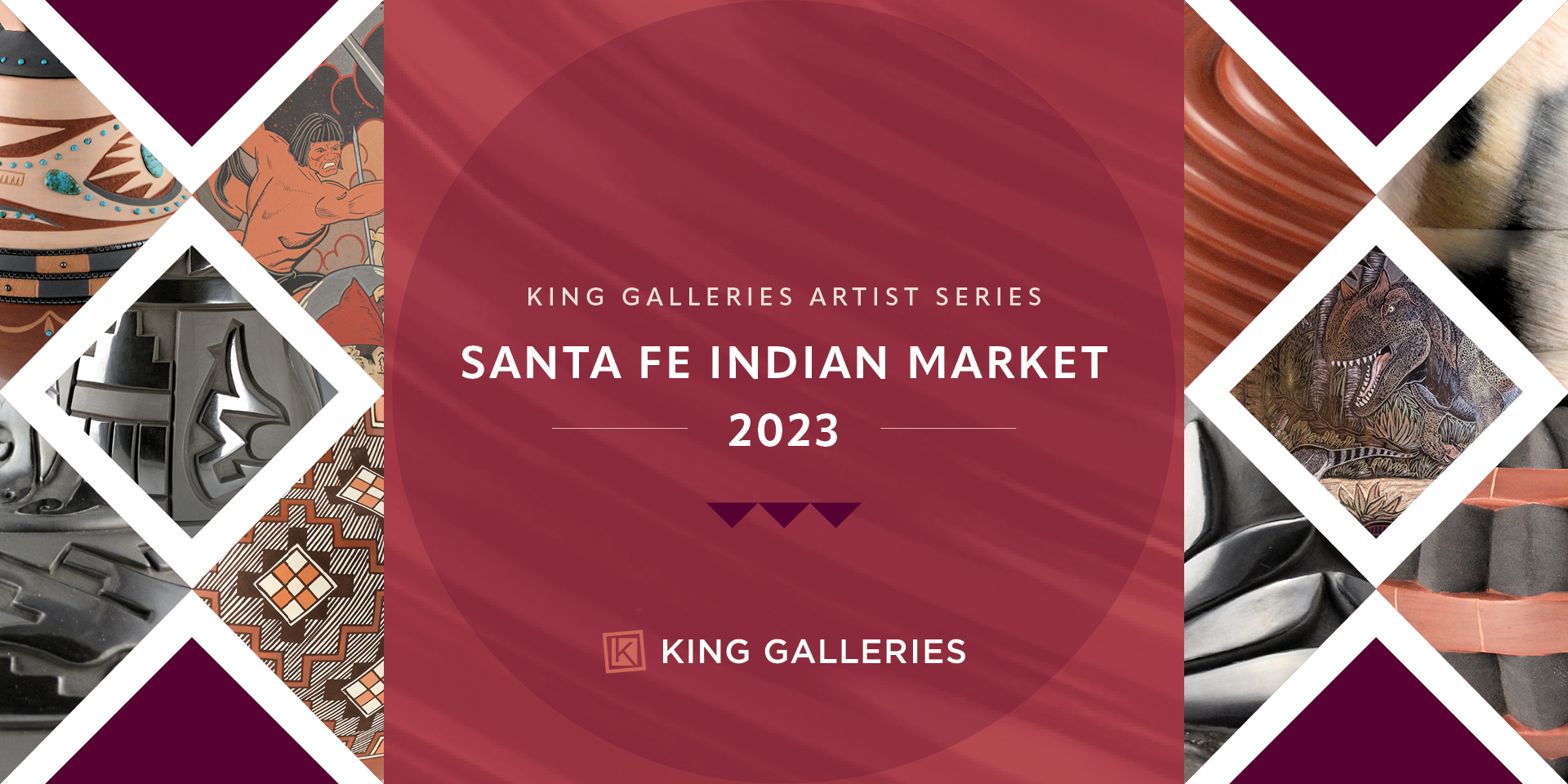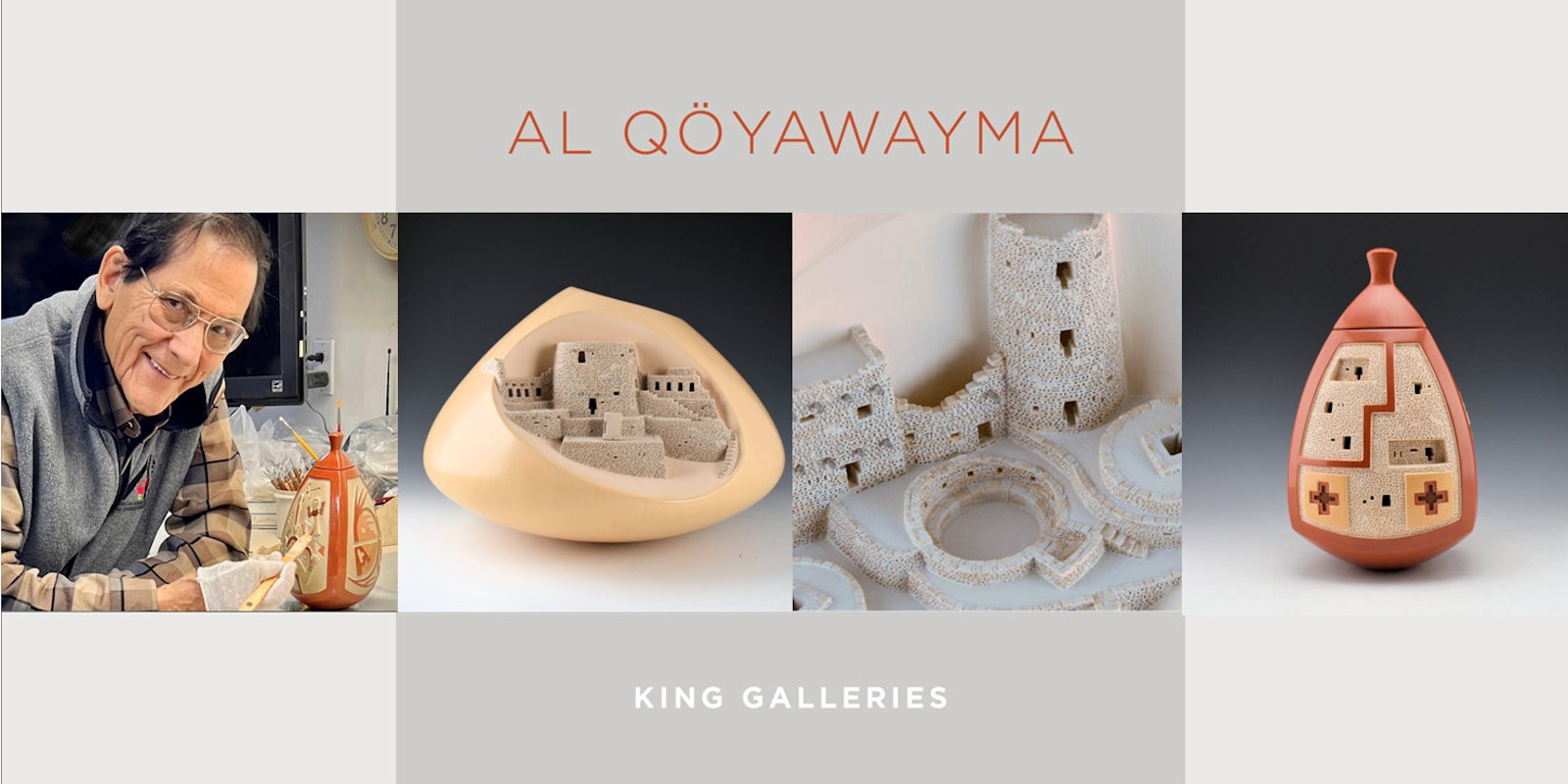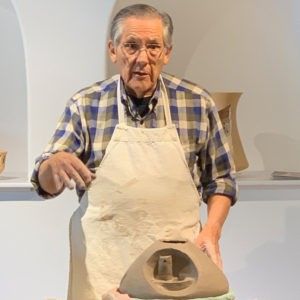Artist Media Series
Living Artists
Historic
$ 14,000.00
This is a large wide shoulder jar by Al Qoyawayma. It is coil-built and thin-walled. The jar is the classic Sikyatki shape with a wide shoulder. The jar is stone polished in a vertical or “onion skin” manner. This creates a strong visual of the polish lines extending out from the mouth of the jar. The piece has a large stylized bear in matte relief as the design. The bear is created in “reppousse” or pushed out from the inside, NOT applique. This is very much in the style of his aunt, Elizabeth White. The bowl is simple and elegant with an emphasis on the form and contrast of matte and polished surfaces. The jar is signed, “Al Qoyawayma”. This is a new piece from 2022.
Out of stock
This is a large wide shoulder jar by Al Qoyawayma. It is coil-built and thin-walled. The jar is the classic Sikyatki shape with a wide shoulder. The jar is stone polished in a vertical or “onion skin” manner. This creates a strong visual of the polish lines extending out from the mouth of the jar. The piece has a large stylized bear in matte relief as the design. The bear is created in “reppousse” or pushed out from the inside, NOT applique. This is very much in the style of his aunt, Elizabeth White. The bowl is simple and elegant with an emphasis on form and contrast of matte and polished surfaces. The jar is signed, “Al Qoyawayma”. This is a new piece from 2022.
Each of the ears of corn is textured to represent the kernels. The contrast of the matte and polished surfaces works to enhance the design and form. Each ear of corn is the same matte coloration, but in the photos, the shadows make them appear lighter and darker. It is in excellent condition with no chips, cracks, restoration or repair. It is signed on the bottom in the clay, “Al Qoyawyama”.
“The earliest corn motif is found on pottery in Ecuador dating to 1900 BC. The technique was to push out from the inside of the pottery the basic form of the corn ear shape and then sculpt the kernel decoration or relief. Al and Elizabeth White (his aunt) saw an exhibit of “Ancient Ecuador, CUlture, clay, and creativity” at the Field Museum in Chicago in 1975. They realized that they were creating a similar technique at Hopi. Elizabeth began using this motif in the early 1960s. The corn motif is used in sacred respect of the corn in sustaining Native Americans over at least the last several thousand years.” Al Qoywayama, Hopi Potter, 1984
Artist Media Series
Living Artists


 Al Qoyawayma
Al QoyawaymaAl Qoyawayma has created two distinctive styles of Hopi pottery. The first style embodies figurative sculpted reliefs using the repousse technique, combined with traditional coil construction and tactile stone polished surfaces. The resulting contemporary Hopi pottery calls forth images of the Southwest with its subtle mix of desert hues, creating an interplay of light and shadow reminiscent of the Hopi land. This land and the essence of his ancient relatives nurture and inspire the artist.
The second is polychrome and a "futuristic" version of Sikyatki pottery from the 1500s. The pieces are carved and slipped with various clay colors. The precision of the carving and the contrasting colors make this style visually dynamic.
Al writes of himself:
"I am of the second generation of Hopi beyond the broken pattern, a pattern, a way of life utterly foreign to the western world. With the real influence of western civilization, I am the product of two worlds. Out of our family clan, the Coyote Clan, it was said that we would be the generation to meet the new world and make a change that was our ancient role as the Coyote Clan….to be those who go before. Therefore, it is only natural that one of our necessary survival skills, as exhibited by our ancestors, should be adapted to today's art world. Through the gentle hand and guidance of a beautiful teacher, my aunt Polingaysi, I learned the basic techniques and philosophy I now use in my pottery creations.
My clay creations reflect the southwest environment's aesthetic influences and values passed down through our family. Form, textures, contrasts, shadow, and the softness of desert color hues are foremost in my work. Oral history and research provide me with emerging themes; identifying who we are is a profound pursuit. At the same time, my repoussé technique offers a "contemporary" style of ceramics. A particular tradition does not restrict me; I'm free to innovate. I find myself trying to "reach" in my creative pursuit as I strive to bring into focus human and spiritual things beyond my reach. Creativity will always be my challenge."
Al Qoyawayma won "Best of Pottery" at the 2016 Santa Fe Indian Market and "Best of Pottery" at the 2017 Heard Indian Market.